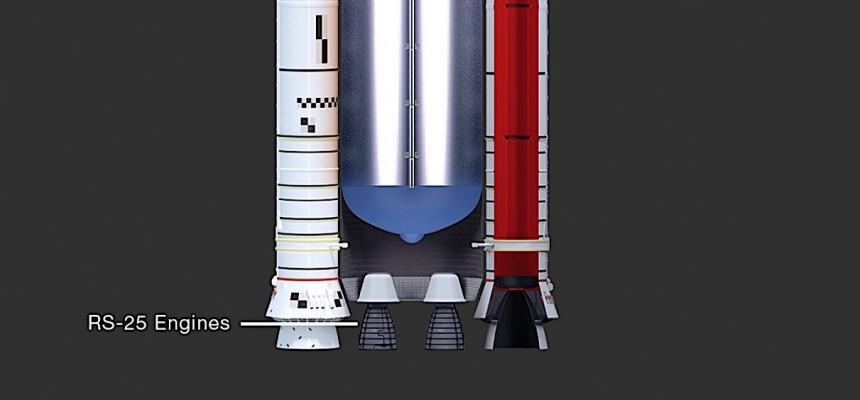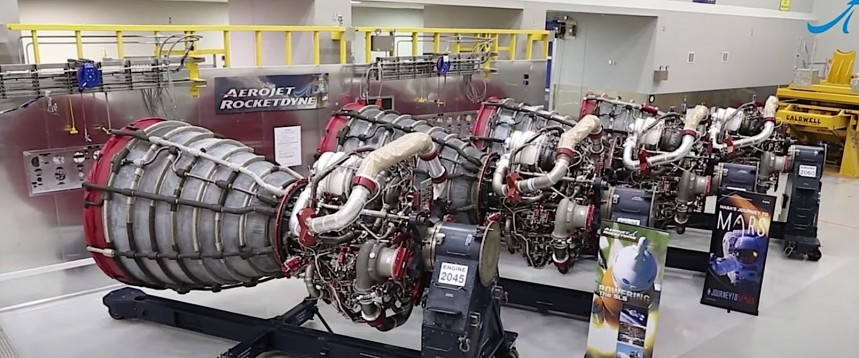On August 29, American space agency NASA tried to kickstart the Artemis Moon exploration program, humanity’s second such effort, with the launch of the first version of the Space Launch System (SLS) rocket and the Orion capsule. Plagued with issues, the attempt ultimately failed.
Soon after tanking operations began, a hydrogen leak was discovered, not unlike the ones experienced during the wet dress rehearsal tests of earlier in the year. Just like during the last such test, NASA decided to push through it, and declared the leak “acceptable,” if there ever is such a thing in space exploration.
Then, a potential crack was spotted in one of the flanges connecting the fuel tanks and the core stage. Although a clear explanation for that was not really given, we were told it was nothing structural, so the launch was cleared to proceed.
But then, during the core stage’s bleed phase, one of the four engines (No. 3) attached to the bottom of the rocket displayed “higher temperatures than the other engines,” and the decision was made to scrub the launch.
Before we set out to witness the second launch attempt, scheduled for later today (2:17 p.m. EDT on Saturday, September 3), we thought to give you a closer look at the engine family that was responsible for the first attempt failure.
As some of you might already know, the engines are called RS-25, are made by Aerojet Rocketdyne, and they been used before, as the main engines of the space shuttle. They’ve been tweaked, of course, and adapted for use on the SLS.
The staged-combustion RS-25 was first used in 1979, and was flown into space for the first time two years later, with space shuttle mission STS-1. It stayed in service for three decades, being retired along with the spacecraft in 2011 (STS-135). During this time, it was used 135 times, with operational thrust levels between 100 and 104 percent, and went through 5 major upgrades.
The space shuttle had three such engines, which burn liquid oxygen and liquid hydrogen, but for the SLS a configuration of four was chosen. Work on adapting them for use in the Moon rocket really started in 2015, with the first hot fire test of a new engine controller. Then, in 2017, the engines were certified for flight, and the combo of four meant for the SLS went through its first hot fire test in 2021. Upgraded by Northrop Grumman, the engines can now operate at up to 109 percent thrust levels.
Each engine is comprised of four turbopumps, a main combustion chamber, a nozzle, and an engine controller. For the SLS Block 1 application (Artemis I), each of the four engines should be capable of generating 416,300 lbs of thrust at sea level (512,300 lbs in vacuum), and are slotted to burn for about eight minutes at up to 6,000 degrees Fahrenheit (3,315 Celsius).
The four engines, and the two solid boosters that accompany them, should make the SLS the most powerful rocket ever, capable of developing a total of 8.8 million pounds of thrust, a stunning 15 percent more than the Saturn V that was the backbone of the Apollo program. Despite the huge power, the rocket will be capable of lifting just 27 tons (59,525 pounds) of cargo.
With a proven track record, the RS-25s have no reason not to work on the SLS, and the issue that prevented the Artemis I launch will probably be overcome. NASA plans to use these engines for the future Artemis missions as well, as it has an inventory of 16 of them, leftovers from the space shuttle program.
Once these are gone (the SLS is not reusable, and after each launch the core stage, its engines, and boosters will become useless), NASA will shift to new engine, currently in development over at Aerojet, and slotted for delivery starting 2023.
Then, a potential crack was spotted in one of the flanges connecting the fuel tanks and the core stage. Although a clear explanation for that was not really given, we were told it was nothing structural, so the launch was cleared to proceed.
But then, during the core stage’s bleed phase, one of the four engines (No. 3) attached to the bottom of the rocket displayed “higher temperatures than the other engines,” and the decision was made to scrub the launch.
Before we set out to witness the second launch attempt, scheduled for later today (2:17 p.m. EDT on Saturday, September 3), we thought to give you a closer look at the engine family that was responsible for the first attempt failure.
The staged-combustion RS-25 was first used in 1979, and was flown into space for the first time two years later, with space shuttle mission STS-1. It stayed in service for three decades, being retired along with the spacecraft in 2011 (STS-135). During this time, it was used 135 times, with operational thrust levels between 100 and 104 percent, and went through 5 major upgrades.
The space shuttle had three such engines, which burn liquid oxygen and liquid hydrogen, but for the SLS a configuration of four was chosen. Work on adapting them for use in the Moon rocket really started in 2015, with the first hot fire test of a new engine controller. Then, in 2017, the engines were certified for flight, and the combo of four meant for the SLS went through its first hot fire test in 2021. Upgraded by Northrop Grumman, the engines can now operate at up to 109 percent thrust levels.
Each engine is comprised of four turbopumps, a main combustion chamber, a nozzle, and an engine controller. For the SLS Block 1 application (Artemis I), each of the four engines should be capable of generating 416,300 lbs of thrust at sea level (512,300 lbs in vacuum), and are slotted to burn for about eight minutes at up to 6,000 degrees Fahrenheit (3,315 Celsius).
With a proven track record, the RS-25s have no reason not to work on the SLS, and the issue that prevented the Artemis I launch will probably be overcome. NASA plans to use these engines for the future Artemis missions as well, as it has an inventory of 16 of them, leftovers from the space shuttle program.
Once these are gone (the SLS is not reusable, and after each launch the core stage, its engines, and boosters will become useless), NASA will shift to new engine, currently in development over at Aerojet, and slotted for delivery starting 2023.














